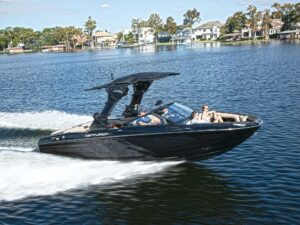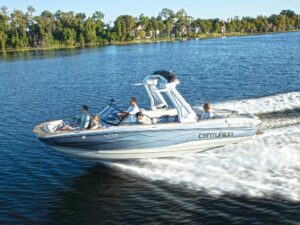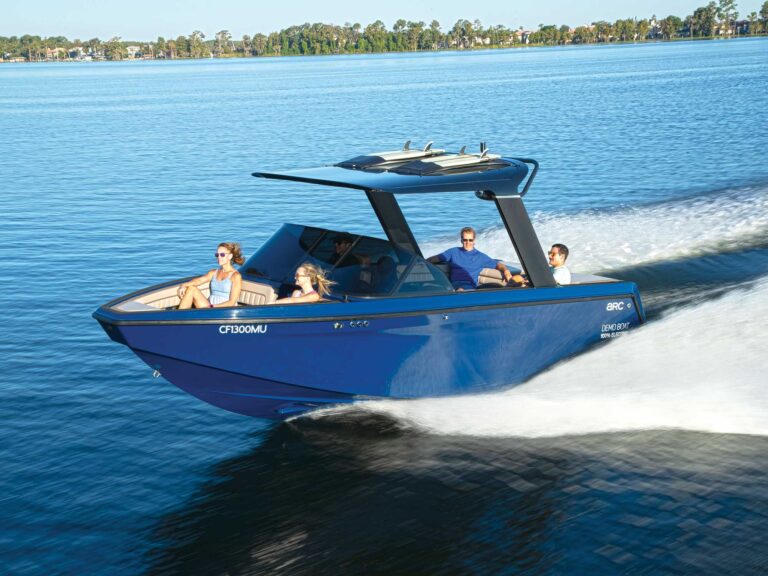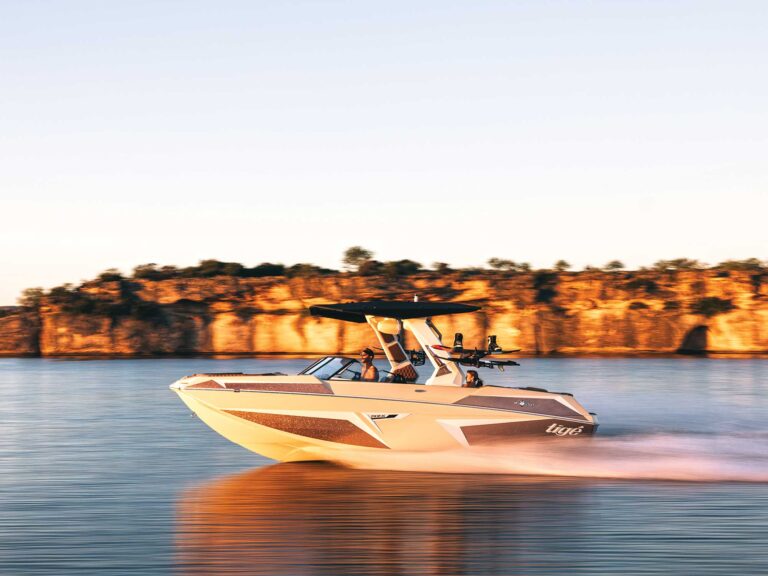
Spring Weather
Looming like a giant anvil over the far end of the lake and in a direct line with our launch ramp, we appeared to be on a collision course with an angry-looking – if isolated — thunderhead. Even as we watched, a gray veil dropped from the cloud as it began to dump rain due west of our position. As family members donned raingear and began asking about our Plan B for getting the pontoon boat back to the ramp, I backed off the throttle a bit but didn’t alter course, making a beeline for the launch area and the distant maelstrom.
When we arrived safe and dry at our destination, which by the time we arrived was bathed in sunlight, the banter was about how “lucky” we were that the storm cloud moved off, and how I had won the gamble that it would do so.
What they didn’t know is that I had hedged my bet with a tip from the storm itself: the sheet of rain dropping from the cumulonimbus cloud had a definite slant to it. I could tell from its angle that, rather than bearing down on us, the storm was moving from south to north across our path and unless conditions changed drastically, would not be a threat. Had the broad shadow of rain appeared to be dropping straight down from the cloud, I would have reacted differently. A sheet of rain that looks to be perpendicular to the horizon means that the storm is either moving directly toward or directly away from the viewing site, and it’s time to factor in the wind direction to determine its path and your next move.
When on the water I also call on some of the more popular weather-predicting proverbs that are part of boating lore. One that comes in handy during summer boat trips reads:
Mackerel skies and mare’s tails
Make tall ships carry low sails
The rhyme helps me remember that cirrus clouds, flying high in the sky resembling wisps in a mare’s tail, signal fair weather – as long as the “hairs” do not point upward or downward, which is often a sign of rain to come. Another overhead harbinger of foul summer weather is a “mackerel sky,” caused by cirrus clouds closing to form cirrocumulus or altocumulus clouds in a pattern resembling wave-rippled sand or the markings on the flank of a fresh-caught mackerel.
And if I had a gallon of gas for every time I’ve muttered the sage: _ red sky at morning, sailors take warning_ credo to help me keep my color/weather references straight over the course of my boating career, I wouldn’t care what heights fuel prices reach this summer!
Weather Savvy
Basic safety guidelines for summer boating include checking weather forecasts before departing, filing a float plan with the marina or a responsible person ashore who will contact authorities if you do not return when expected, knowing your boat’s limitations, having a properly operating VHF marine band radio, emergency signaling gear and the proper flotation devices aboard. The national weather service web site at www.nws.noaa.gov offers links to local weather information and is a great site to reference before heading out.
Once on the water:
Watch for any significant changes in weather patterns. Listen to NOAA weather radio and additional official sources of information for the latest warnings, watches, advisories and forecasts.
During lightning storms, return to safe harbor as quickly and safely as possible and seek shelter inside a sturdy, enclosed building. If caught on the open water, boaters should stay away from all ungrounded metal objects and seek the best possible shelter while on board.
Remember that wind gusts of 34 knots or more can swamp and capsize small boats, and that high profile pontoons are even more susceptible to the whims of the wind that traditional craft. Boaters should look for signs of approaching strong winds near storms by noting an arc of low-altitude clouds fast approaching their vicinity.
Waterspouts rarely occur in inland lakes, but are common in sub-tropical coastal waters during the summer months. When they do arise, the violent winds can cause serious injury and death. The best way to avoid a waterspout is to move at a 90-degree angle away from its apparent directional movement.
SUGGESTED READING:









